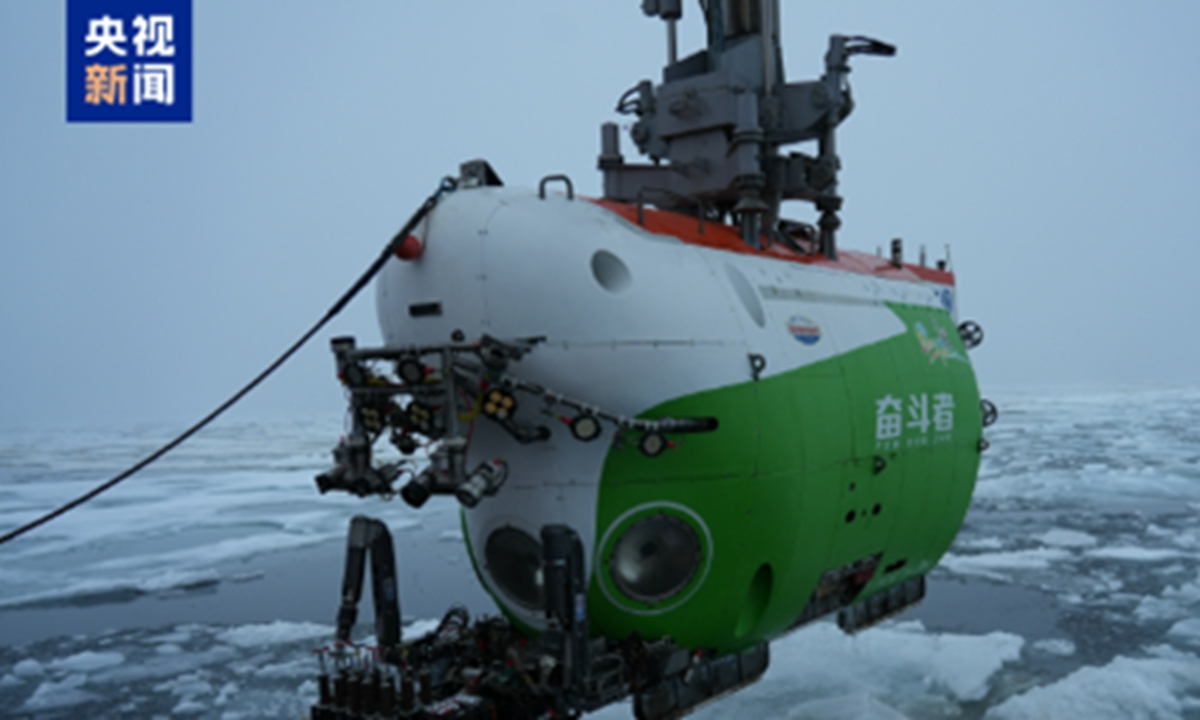China’s scientific expedition team for the Arctic manned deep-diving mission returned home on Monday, with China’s independently designed and built Tan Suo San Hao (Exploration No. 3), China’s first comprehensive scientific research ship designed for global deep-sea exploration, carried the Fendouzhe (Striver) submersible to complete 43 dives in the Arctic.
The expedition was jointly organized and executed by the Ministry of Natural Resources and the Chinese Academy of Sciences. The Fendouzhe and Jiaolong manned submersibles conducted joint underwater operations, pioneering China’s first dual-submersible collaborative mission model, according to CCTV News.
The Arctic expedition team departed Sanya, South China’s Hainan Province on July 22 this year, joining the Jiaolong manned submersible team to conduct deep-diving missions in the Arctic Ocean. During the 56-day operation in the Arctic Ocean, the team conducted multiple scientific investigations and experiments.
Meanwhile, the Jiaolong team completed China’s first ice-zone dive in the Arctic and conducted collaborative underwater operations with Fendouzhe. In the central Arctic basin, where sea ice coverage exceeded 80 percent, the team accomplished the world’s first manned deep-sea scientific exploration of the Gakkel Ridge, reaching a maximum depth of 5,277 meters.
This expedition pioneered a new “ship-submersible collaborative” model for mobile ice diving in heavily iced regions, making China the only country currently capable of continuous manned deep-diving in the Arctic’s dense sea ice regions, according to CCTV.
The team collected valuable samples of water, sediment, rocks and marine organisms, along with extensive observational data, which will offer crucial support for research into the rapid climate changes in the Arctic.
Global Times




